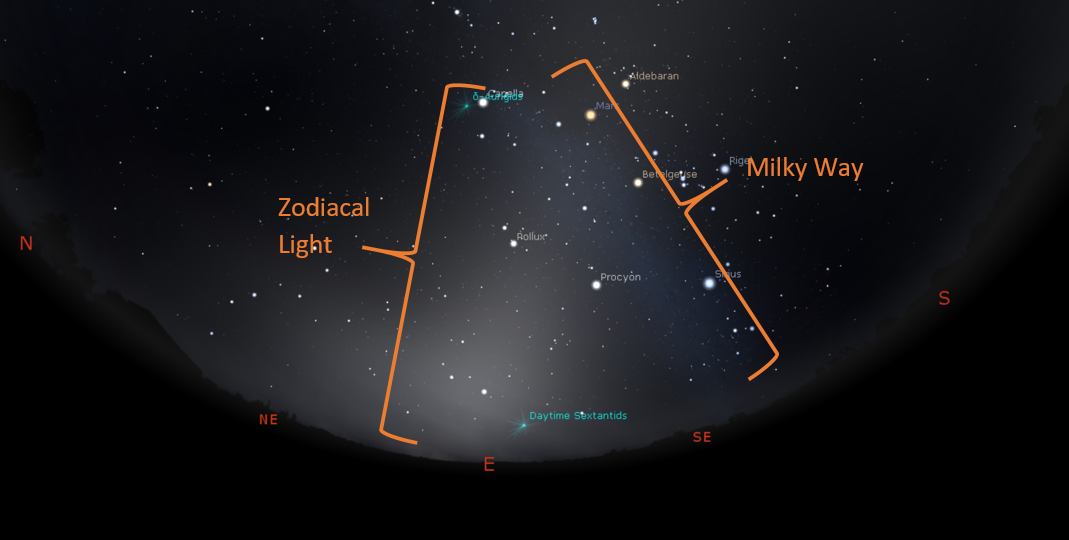Jared May, What's Up, September 20-27, 2022
This week will bring us officially into Autumn, although, the weather doesn’t necessarily reflect that. Be expecting a handful of clear nights that will be on the cooler side, starting at around 70°F at sunset and slowly dropping into the low 60s and even 50s on some nights.
Sunset this week is around 7:30 PM, so have your telescopes and stargazing partners ready by 8:30 PM. For the upcoming clear skies, be on the lookout for the waning crescent moon, the equal day and night of the autumnal equinox, the faint zodiacal light, and evening gas giants.
The moon will be finishing off its waning crescent phase this week as it hits new moon Sunday, September 25th. If you enjoy observing the moon through a telescope or binoculars, it is better to wait until morning just before sunrise rather than staying up past 3 AM to get a glimpse. The amount of sunlight reflected back to the earth off the lunar surface decreases during these phases of the moon. The less light is reflected back, the darker the skies are. This is ideal for stargazers and astrophotographers who want a chance to see the fainter and more difficult-to-spot deep-sky objects.
The waning (getting smaller) crescent moon.
On Thursday, September 22nd, you can officially say “hello” to autumn as that is the date of the autumnal equinox and official start to the fall season. This event is marked by the sun cutting its path across the sky at exactly along the celestial equator, which is just a projection of earth’s equator onto the sky.
Past Thursday, the nights will be longer than the days. This is more great news for stargazers since more darkness, more time under the stars, is better!
Anytime over the next few months when the moon is not bright try spotting something called the “zodiacal light”. Just before sunrise, peer over into the eastern skies and try looking for a faint band of white light stretching upward from the eastern horizon. You will likely need to visit a dark-sky park away from light pollution (like JGAP!) to see this phenomenon.
If you are ambitious and want to spot the zodiacal light this week, it will be best to wait a few days until we are closer to a new moon. This white glow is caused by sunlight scattering off of leftover dust in our solar system, most of which has been around since before the planets were even fully formed. Don’t confuse it for another band of light stretching across the sky from southeast to northwest – that is the Milky Way.
The zodiacal light as seen a few hours before dawn. Look east in a dark location.
Shortly after the sun sets, the first two objects to pop out from the darkening skies will be Jupiter and Saturn. If you wait another few hours, Uranus will appear rising in the east. Of Jupiter’s 79 moons (only 53 currently have names), four are easy to spot through a set of binoculars: Io, Europa, Ganymede, and Callisto. Can you spot all four? The inner-most of these moon, Io, has an orbital period of only 42 hours, so there is a chance it is hiding behind the gas giant temporarily.
Jupiter and Saturn are the planetary highlights of the evening.
Watching Jupiter’s brightest four moons as they orbit the planet is fascinating.
Get outside and enjoy the welcoming fall night skies this week. Set up a lawn chair or lay out a blanket to gaze up into vastness of space. As a reward for your dedicated stargazing, a careful eye will see four to eight meteors every hour. In addition to these sporadic meteors, be on the lookout this week for the waning crescent moon, the sun traveling over the equator, the faint and diffuse zodiacal light, and three gas giants hanging out after sunset.
Clear Skies!



